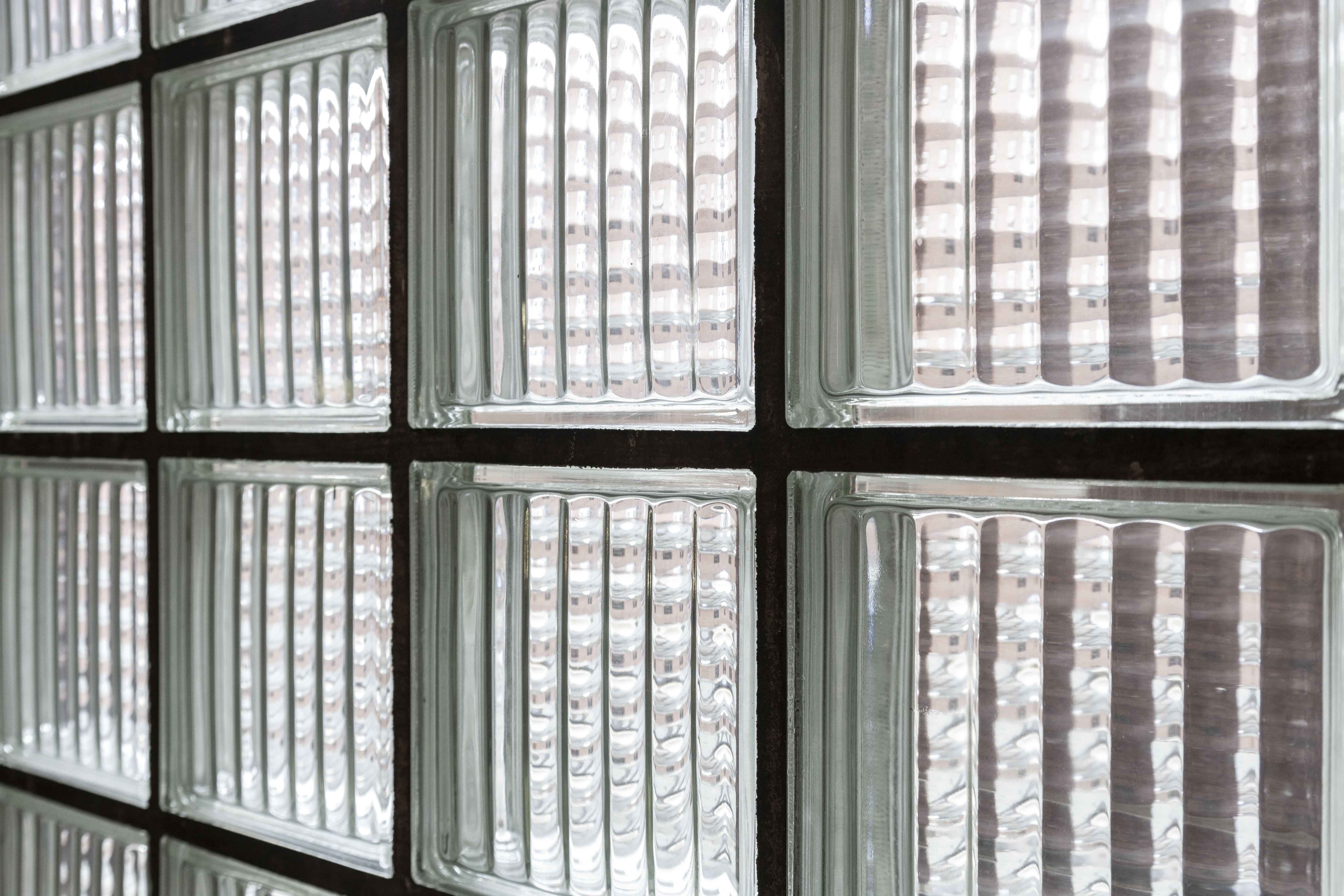“Retro” is back in—so naturally, so is glass block, which is being celebrated as a bold, statement material, not just a solution for durable basement windows or locker room bathrooms. Designers are now pairing it with modern finishes, such as matte metals and woods, as well as maximalist palettes, which express its more stylish and adaptable side.
Best of all, it’s sustainable, long-lasting, and recyclable (it is made of glass, after all). Thanks to its repetitive geometric lines and glassy ripples, it adds dimension to a space while still maintaining a clean and bright feel. All of these factors make us wonder why this material was ever banished in the first place. Read on to review how glass block was used in years past and how designers are using it today.
Glass Block of the Past
Glass block first debuted in the early 1900s, primarily in Europe, initially for use in warehouses and factories—spaces that needed materials that could withstand rigorous conditions while still allowing in natural light. Traditional flat windows were fragile and high-maintenance, whereas glass block is thick, strong, well-insulated, and offers privacy all at once.
Between the 1920s and 1940s, glass block was thrust into the residential architectural spotlight thanks to its geometric, sleek look, which suited the popular Art Deco and Moderne designs of the time. It then progressed to the post-war boom of the 1950s and 1970s, and eventually fell out of favor in the early 1990s after becoming severely overused. But, as all things do, it’s making its way back around in its signature glossy and objectively stylish form.
Emily Minton-Redfield
Modern Ways to Use Glass Block
Today, we’re seeing glass block used in tons of different ways. Everything from false walls and room dividers, bathroom shower enclosures, staircases and entrances, and even outdoors in patios and poolscapes. The rippled, dappled, and frosted finish on the blocks offers privacy while still allowing light to enter, making it ideal for spaces that need to consider both factors.
Not only is glass block being used architecturally, but it’s also appearing in furniture and decor. Today’s glass block options are available in a vast range of styles, shapes, and colors, making the material more versatile than ever. Content creators and designers alike are using it as the base for side tables, desks, shelving, storage, and even lighting.
If you need even more proof, glass block has shown up at more than several high-end hotels, notable places, and events, including (but not limited to) New York’s high-design SoHo boutiques, several design exhibitions at Milan Design Week (Salone del Mobile), where young designers have created side tables, plinths, and shelving systems built entirely of stacked glass blocks, and even in recent renovations at the iconic Standard Hotel in Miami.



